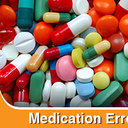Comparative phytochemical profiling of different soybean (Glycine max (L.) Merr) genotypes using GC-MS.
Avainsanat
Abstrakti
This study aimed to estimate the proximate, phenolic and flavonoids contents and phytochemicals present in seeds of twenty four soybeans (Glycine max (L.) Merr) genotypes to explore their nutritional and medicinal values. Crude protein composition ranged between 35.63 and 43.13% in Argentinian and USA (Clark) genotypes, respectively. Total phenolic content varied from 1.15 to 1.77 mg GAE/g, whereas flavonoids varied from 0.68 to 2.13 mg QE/g. The GC-MS analysis resulted identification of 88 compounds categorized into aldehydes (5), ketones (13), alcohols (5), carboxylic acids (7), esters (13), alkanes (2), heterocyclic compounds (19), phenolic compound (9), sugar moiety (7) ether (4) and amide (3), one Alkene and one fatty acid ester. Indonesian genotypes (Ijen and Indo-1) had the highest phenolic compounds than others genotype having antioxidant activities, while the Australian genotype contains the maximum in esters compounds. The major phytocompounds identified in majority of genotypes were Phenol, 2,6-dimethoxy-, 2-Methoxy-4-vinylphenol, 3,5-Dimethoxyacetophenone, 1,2-cyclopentanedione and Hexadecanoic acid, methyl ester. The presence of phytochemicals with strong pharmacological actions like antimicrobial and antioxidants activities could be considered as sources of quality raw materials for food and pharmaceutical industries. This study further set a platform for isolating and understanding the characteristics of each compound for it pharmacological properties.



